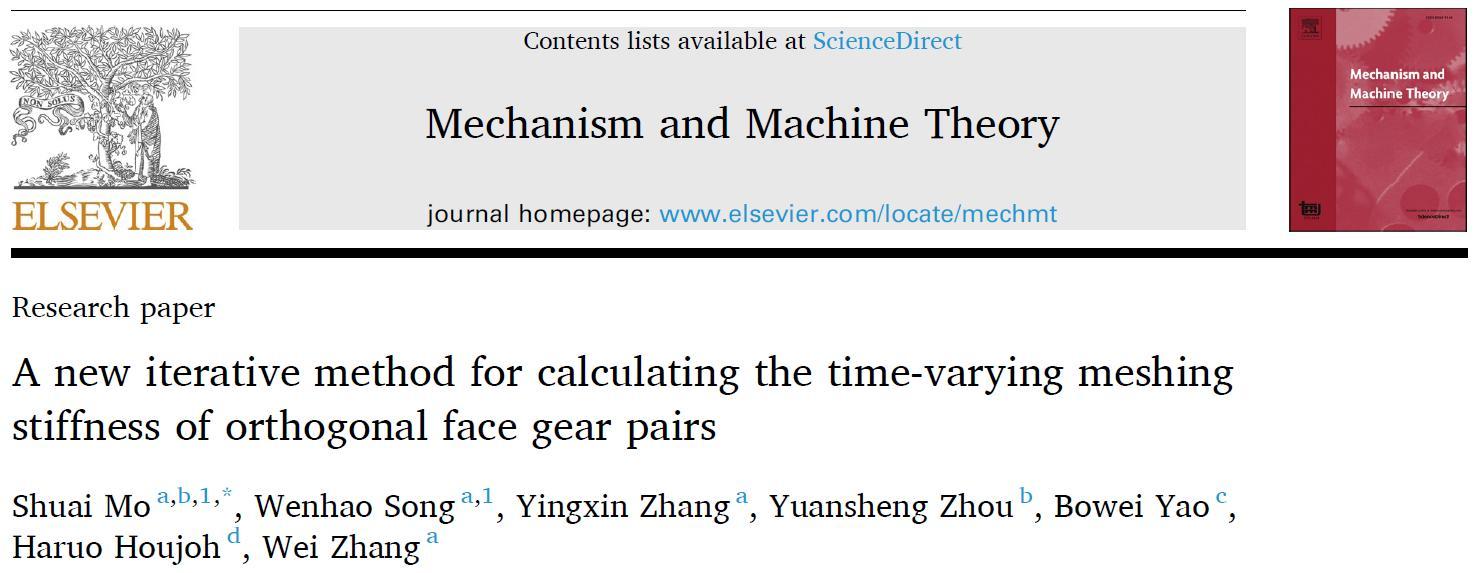Recently, a research team from the School of Mechanical Engineering at GXU has achieved a significant breakthrough in the field of face gear contact mechanics. Their research paper, titled “A new iterative method for calculating the time-varying meshing stiffness of orthogonal face gear pairs”, has been published in Mechanism and Machine Theory, a leading international academic journal in the field of mechanical engineering. The research was conducted under the auspices of the State Key Laboratory of Featured Metal Materials and life-cycle Safety for Composite Structures, jointly established by the provincial and central governments at Guangxi University, which served as the first and corresponding affiliation. Ph.D. Mo Shuai from the School of Mechanical Engineering is the corresponding author, and Prof. Zhang Wei from the same laboratory is a co-author.

Face gears, as core functional components in high-end mechanical transmission systems, are critical foundational parts in industries such as aerospace, rail transportation, new energy vehicles, and precision intelligent manufacturing. The unique geometric configuration and meshing characteristics provide significant advantages in high load-bearing capacity, low-noise operation, and efficient power transmission. However, face gear transmission systems are significantly affected by complex load spectra and dynamic characteristics during operation. Therefore, accurately calculating time-varying meshing stiffness is of great theoretical and engineering value for optimizing gear design parameters and improving system performance and reliability.


The team proposed an innovative iterative calculation method for time-varying meshing stiffness of face gear pairs. This method couples tooth surface slice analysis with the potential energy method, enabling precise calculation of tooth surface deformation under working conditions. By employing an iterative algorithm to optimize calculation parameters, the team achieved accurate solutions for time-varying meshing stiffness. This research provides an efficient and precise calculation method for the field of gear transmission, significantly improving the accuracy and efficiency of meshing stiffness calculations. It also offers critical technical support and theoretical foundations for optimizing the performance of face gear transmission systems.
The research was supported by funding from the National Natural Science Foundation of China, the Guangxi Distinguished Young Scholars Fund, and the Guangxi Major Science and Technology Projects, among others.